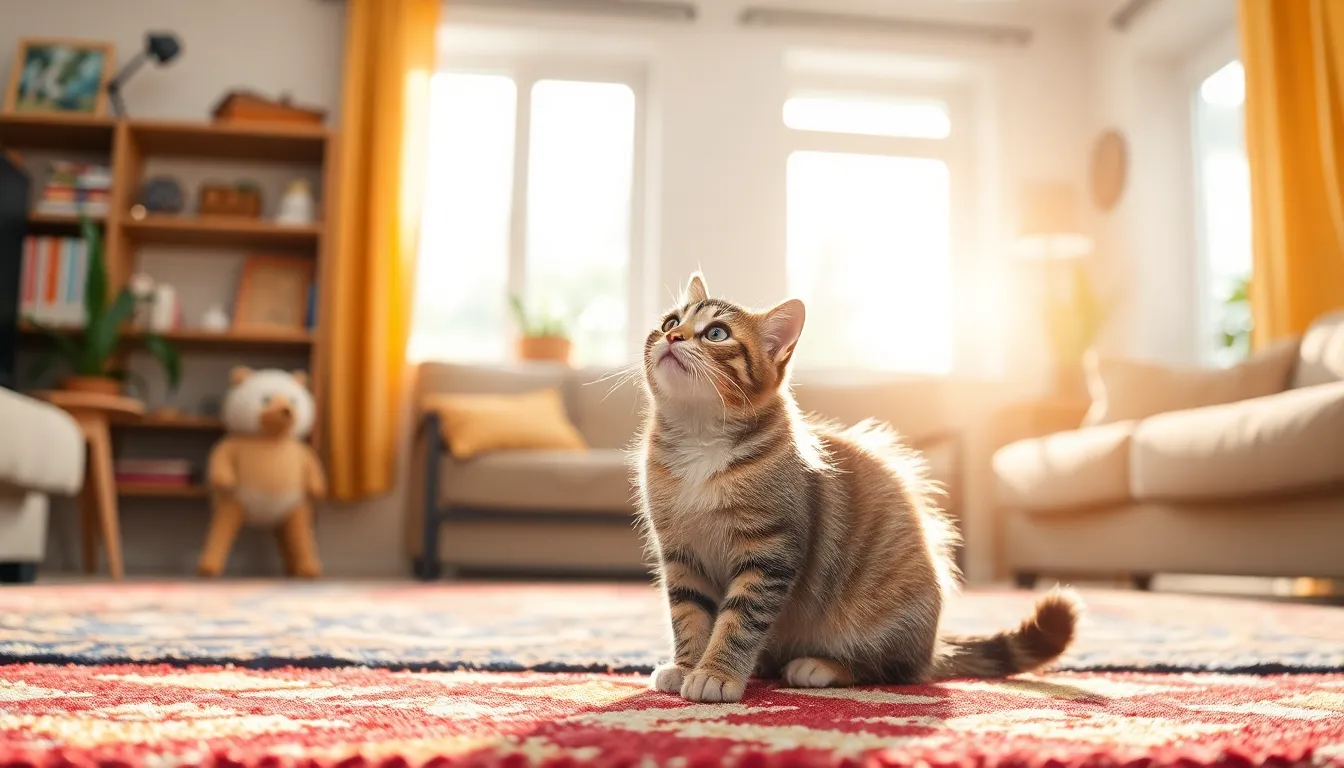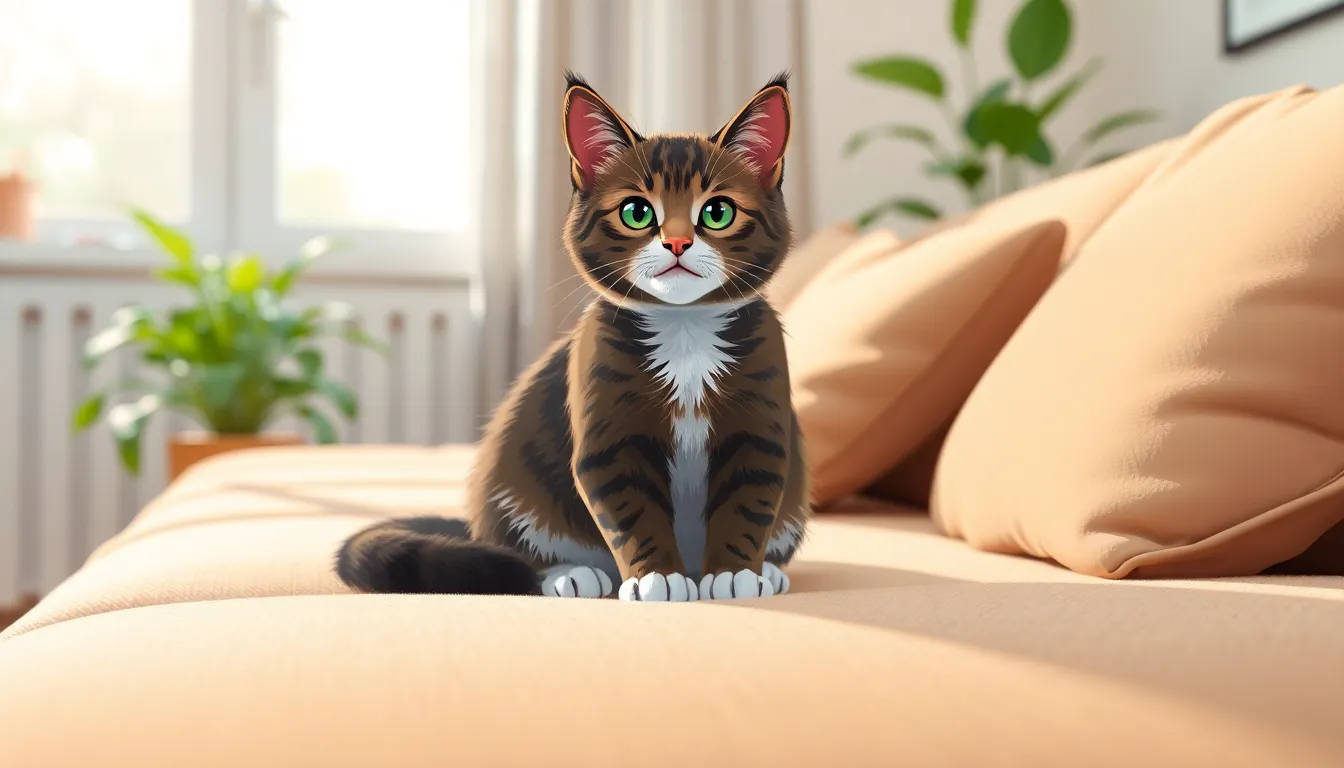Ever wondered how your feline friend’s age stacks up against yours? While cats might seem like they age in cat years, understanding that conversion can be a real game changer for pet parents. After all, a five-year-old cat isn’t just a fluffy ball of mischief; they’re practically a wise old sage in the cat world.
Table of Contents
ToggleUnderstanding Cat Years
Converting cat years to human years involves recognizing the unique aging process of felines. A one-year-old cat is approximately equivalent to a 15-year-old human, showcasing rapid maturation in its first year. After the second year, the aging slows significantly. For example, a two-year-old cat equates to about 24 human years.
From this point, each additional year adds roughly four human years, illustrating the notable difference in lifespan and development. By age five, a cat reaches around 36 human years, displaying characteristics of a youthful adult. Insight into this conversion helps owners appreciate their cat’s growth phases and behaviors.
Understanding cat aging allows for better pet care decisions. Owners can adapt care strategies to a cat’s life stage, whether considering diet, exercise, or health monitoring.
The aging process also results in varied health needs. Regular veterinary check-ups become essential as cats transition from young adults to seniors around age seven, corresponding to about 44 human years.
Marking significant milestones in a cat’s life aids in managing expectations. Cats exhibit changes in energy levels, socialization, and health care needs as they age. Recognizing these stages fosters a closer bond between cat and owner, enhancing the relationship through informed care.
The Formula for Conversion

Converting cat years to human years involves a specific formula. Understanding this formula allows pet owners to appreciate their cat’s age and corresponding life stage accurately.
Basic Calculation
The first two years of a cat’s life correspond to significant human ages. A one-year-old cat equals about 15 human years. By the second year, a cat reaches around 24 human years. After these initial years, each additional cat year adds approximately four human years. For instance, a five-year-old cat is roughly 36 in human terms. Using this formula, owners can better understand their cat’s maturity and tailor their care accordingly.
Factors to Consider
Multiple factors influence the accuracy of age conversion, including breed and health status. Breeds vary in aging speed; some mature faster while others slow down in their later years. Health plays a vital role as well. Regular check-ups help detect age-related issues early, impacting a cat’s life expectancy. Lifestyle choices, such as diet and exercise, also affect aging rates. Recognizing these aspects aids in further understanding the conversion from cat years to human years.
Age Comparison Chart
This chart clarifies the relationship between cat years and human years, aiding pet owners in understanding their cat’s developmental and health needs.
Developmental Stages
A cat’s first year parallels a 15-year-old human. By the second year, the cat reaches about 24 human years. Rapid growth and development occur during these early stages. Transitioning from youthful exuberance to maturity happens between ages two and five. At five years, the cat is roughly equivalent to a 36-year-old human adult, displaying independence and social behavior improvements. Awareness of these stages enhances owners’ abilities to provide appropriate enrichment and care. Seniority begins at around seven years, corresponding to 44 human years. Recognizing these critical life phases strengthens the human-animal bond.
Health Implications
As cats age, health requirements evolve. Younger cats generally exhibit higher energy levels and fewer health issues. Regular veterinary check-ups become crucial as they transition to senior status, with many common conditions emerging around seven years. Dental health, weight management, and early detection of diseases play crucial roles in maintaining well-being. At age ten, a cat equates to approximately 56 human years. Understanding these implications allows owners to tailor nutrition, manage weight, and monitor behavior for optimal health outcomes. Proactive care leads to improved quality of life for aging cats.
Common Myths About Cat Aging
Misunderstandings about cat aging can lead to confusion for pet owners. Several common myths exist regarding how cat years translate to human years and what that means for health and behavior.
Dispelling Misconceptions
One misconception suggests that all cats age at the same rate. In reality, age progression varies significantly, especially during early life stages. Many believe a one-year-old cat equates to a 20-year-old human, but it’s closer to 15 years.
Another myth involves aging signs. Some think older cats behave exactly like younger ones. Instead, age brings unique behavioral changes, such as decreased energy and different socialization patterns. Many believe cats don’t need more veterinary care as they age. Regular check-ups become essential starting around seven years, which is equivalent to about 44 human years.
It’s also a common error to assume that all felines thrive on the same diet throughout their lives. Nutritional needs change over time, necessitating tailored diets for different life stages. Understanding these facts enhances the relationship between cats and their owners, promoting appropriate care and improved well-being.
Understanding the conversion of cat years to human years is essential for every cat owner. It provides valuable insights into a cat’s life stages and health needs. Recognizing that a five-year-old cat is equivalent to a 36-year-old human allows owners to appreciate their pet’s maturity and unique behaviors.
As cats age, their requirements change significantly. Regular veterinary check-ups and tailored care become increasingly important, especially as they transition into seniority. By being informed about these changes, owners can foster a deeper bond with their feline friends, ensuring they receive the best possible care throughout their lives.

